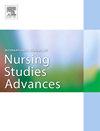Background and design of the Physical Frailty and Symptom Monitoring and Management Behaviors in Heart Failure (PRISM-HF) study: A mixed methods study
IF 3.1
Q1 NURSING
International Journal of Nursing Studies Advances
Pub Date : 2024-12-13
DOI:10.1016/j.ijnsa.2024.100282
引用次数: 0
Abstract
Background
Many adults with heart failure (HF) are physically frail and have worse outcomes. While the biological profile of physical frailty in HF has been examined, the behavioral profile remains unstudied. Physical frailty may impact self-care behaviors, particularly symptom monitoring and management (SMM), which in turn results in adverse outcomes. This paper describes the background and design of a study that addresses this knowledge gap, entitled “Physical Frailty and Symptom Monitoring and Management Behaviors in Heart Failure” (PRISM-HF).
Study design and methods
PRISM-HF is a sequential mixed methods study where in Phase 1, we collect quantitative data from a sex-balanced sample of 120 adults with HF, and in Phase 2, we collect qualitative data from ∼32–40 adults from this sample, aiming to: (1) quantify associations among physical frailty, SMM behaviors, and outcomes; (2) describe the experience of SMM behaviors for physically frail and non-physically frail adults with HF; and (3) identify the SMM behavioral needs of physically frail and non-physically frail adults with HF. At baseline, we measure symptoms, SMM behaviors, and physical frailty and collect clinical events at 6-months. We will use generalized linear modeling and survival analysis in Aim 1, directed content analysis in Aim 2, and triangulation analyses using an informational matrix in Aim 3.
Conclusions
This innovative study will investigate the behavioral underpinnings of physical frailty in HF, incorporate the patient's perspective of SMM behaviors in the context of physical frailty, and identify possible explanations for the effect of physical frailty on outcomes.
心力衰竭患者体质虚弱、症状监测和管理行为(PRISM-HF)研究的背景与设计:混合方法研究。
背景:许多成人心力衰竭(HF)患者身体虚弱,预后较差。虽然已经研究了HF中身体虚弱的生物学特征,但其行为特征仍未得到研究。身体虚弱可能会影响自我保健行为,特别是症状监测和管理(SMM),这反过来会导致不良后果。本文描述了一项研究的背景和设计,以解决这一知识差距,题为“心力衰竭的身体虚弱和症状监测和管理行为”(PRISM-HF)。研究设计和方法:PRISM-HF是一项连续混合方法研究,在第一阶段,我们从性别平衡的120例HF成人样本中收集定量数据,在第二阶段,我们从该样本中收集约32-40例成人的定性数据,旨在:(1)量化身体虚弱、SMM行为和结局之间的关联;(2)描述身体虚弱和非身体虚弱的HF成人的SMM行为体验;(3)识别体弱和非体弱HF成人的SMM行为需求。在基线时,我们测量症状、SMM行为和身体虚弱,并收集6个月时的临床事件。我们将在Aim 1中使用广义线性建模和生存分析,在Aim 2中使用定向内容分析,在Aim 3中使用信息矩阵进行三角分析。结论:本创新研究将探讨心力衰竭患者身体虚弱的行为基础,在身体虚弱的背景下纳入患者对SMM行为的看法,并确定身体虚弱对预后影响的可能解释。
本文章由计算机程序翻译,如有差异,请以英文原文为准。
求助全文
约1分钟内获得全文
求助全文
来源期刊

International Journal of Nursing Studies Advances
Nursing-General Nursing
CiteScore
5.80
自引率
0.00%
发文量
45
审稿时长
81 days
 求助内容:
求助内容: 应助结果提醒方式:
应助结果提醒方式:


